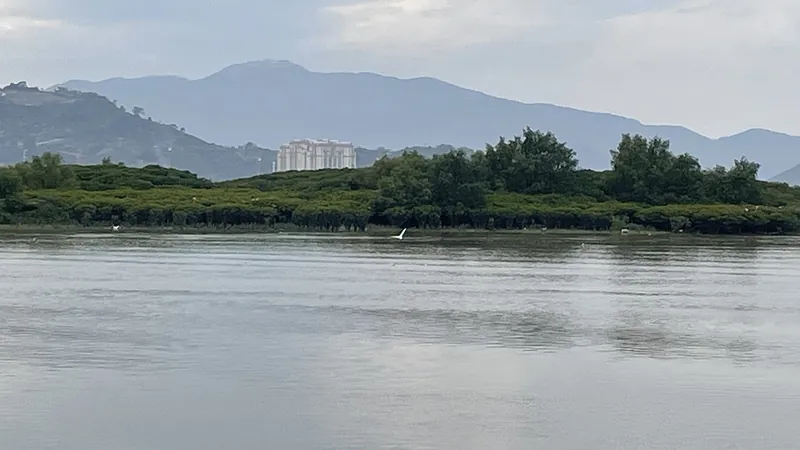
Unlocking the Secrets of Black Carbon's Path to the Ocean
2025-07-11
Author: Nur
The Hidden Journey of Black Carbon
From raging forest fires to the hum of vehicles, incomplete combustion leaves behind stubborn remnants like char and soot. These organic compounds can linger in our environment for years, but as they are gradually broken down, some of their carbon finds its way into our water systems—groundwater, lakes, and rivers—before ultimately reaching the ocean.
The Mystery of Dissolved Black Carbon (DBC)
Known as dissolved black carbon (DBC), this substance forms the largest recognized reservoir of stable dissolved organic carbon in our oceans. However, scientists have discovered a puzzling mismatch: the isotopic makeup of DBC in ocean waters doesn’t align with what rivers are contributing. This suggests there might be other, unidentified sources of DBC flowing into the sea that have been overlooked in global carbon assessments.
Revealing Untold Sources Through Field Research
To fill these knowledge gaps, a team led by Zhao conducted extensive surveys across China’s eastern coastline, investigating the Jiulong, Changjiang (Yangtze), and Pearl River estuaries. Sampling throughout all seasons, they aimed to uncover how DBC dynamics fluctuate within coastal ecosystems as it heads to the ocean. Previous studies were often limited to single estuaries and overlooked seasonal and tidal variations.
Groundwater Discharge: The Missing Link?
Surprisingly, the research unveiled submarine groundwater discharge (SGD) as a probable unrecognized source of DBC. The team discovered a fascinating pattern: during flood tides, as seawater surged into the estuaries, DBC levels dramatically increased. Conversely, when water ebbed back to the ocean, DBC concentrations dropped. This behavior suggests that the influx of salty ocean water during high tides encourages a release of DBC from groundwater into the water column.
Global Impact of Submarine Groundwater Discharge
The researchers estimate that globally, SGD accounts for approximately 20% of the river transport of DBC to the oceans each year. Considering DBC's crucial role in carbon sequestration and biogeochemical processes in marine environments, these findings highlight a pressing need to integrate estuarine dynamics into global carbon models. Such inclusions could significantly reshape our understanding of the carbon cycle in the ocean.
Why This Matters Now More Than Ever
As climate change intensifies and ocean health becomes increasingly precarious, identifying all sources of carbon entering our seas is critical. This breakthrough in understanding the pathways of black carbon not only enhances scientific knowledge but also equips policymakers and conservationists with the information needed to protect marine ecosystems for future generations.


 Brasil (PT)
Brasil (PT)
 Canada (EN)
Canada (EN)
 Chile (ES)
Chile (ES)
 Česko (CS)
Česko (CS)
 대한민국 (KO)
대한민국 (KO)
 España (ES)
España (ES)
 France (FR)
France (FR)
 Hong Kong (EN)
Hong Kong (EN)
 Italia (IT)
Italia (IT)
 日本 (JA)
日本 (JA)
 Magyarország (HU)
Magyarország (HU)
 Norge (NO)
Norge (NO)
 Polska (PL)
Polska (PL)
 Schweiz (DE)
Schweiz (DE)
 Singapore (EN)
Singapore (EN)
 Sverige (SV)
Sverige (SV)
 Suomi (FI)
Suomi (FI)
 Türkiye (TR)
Türkiye (TR)
 الإمارات العربية المتحدة (AR)
الإمارات العربية المتحدة (AR)